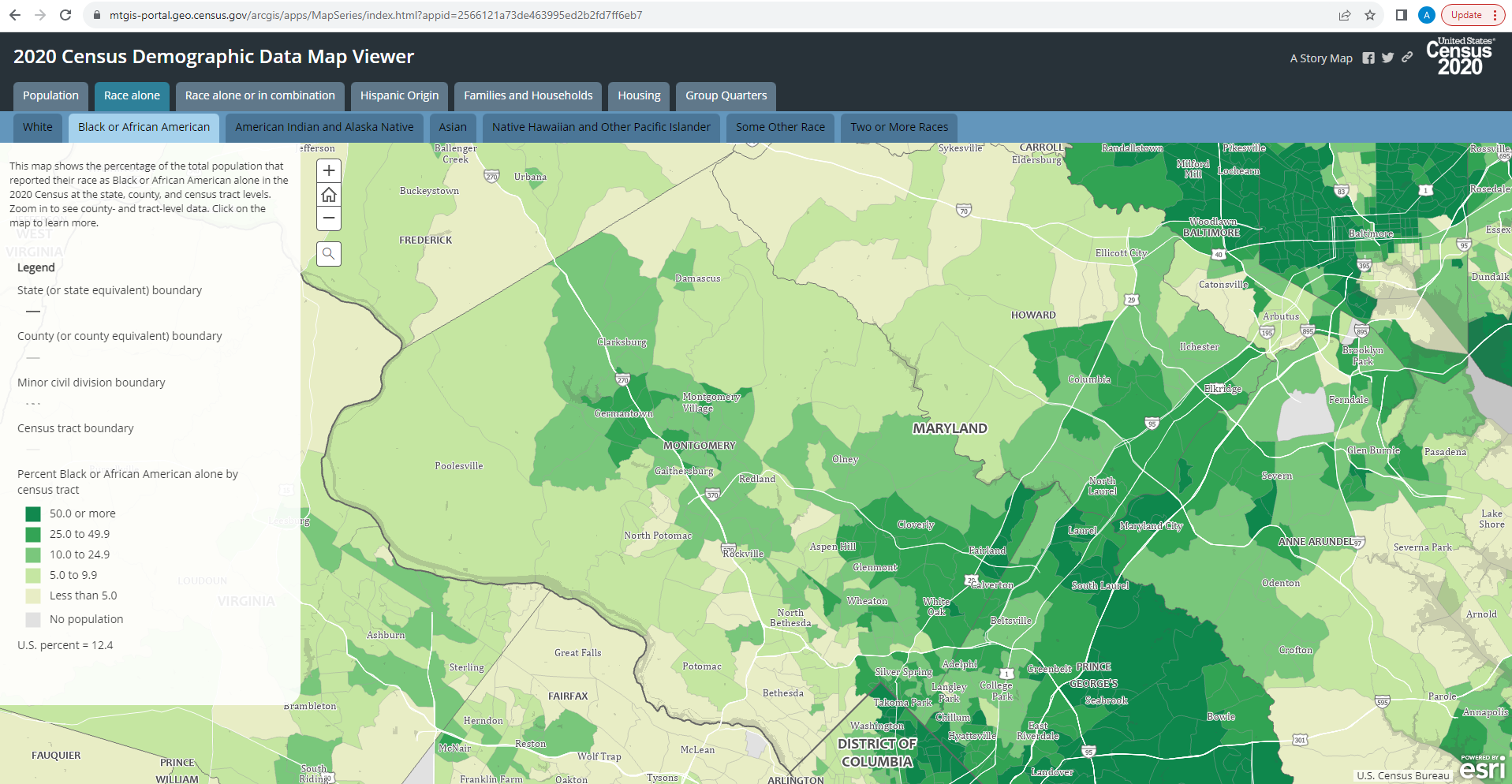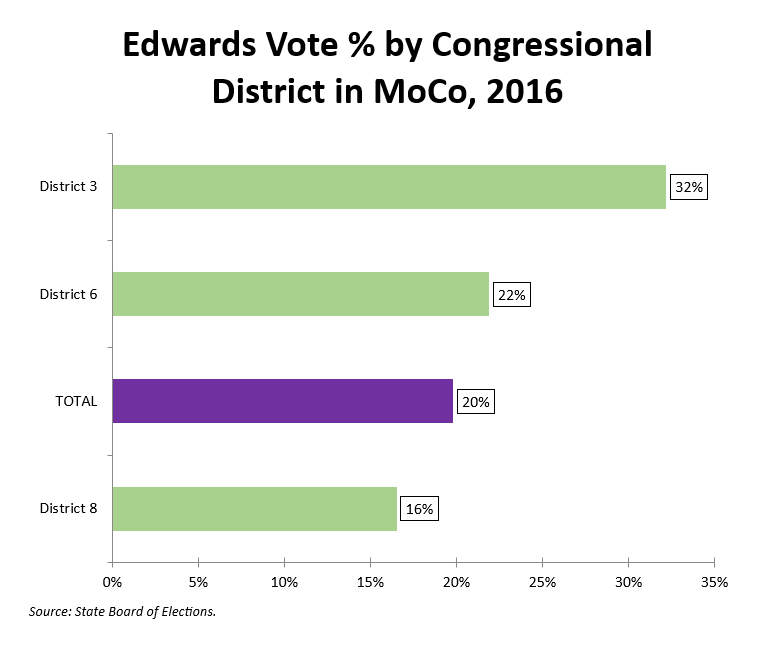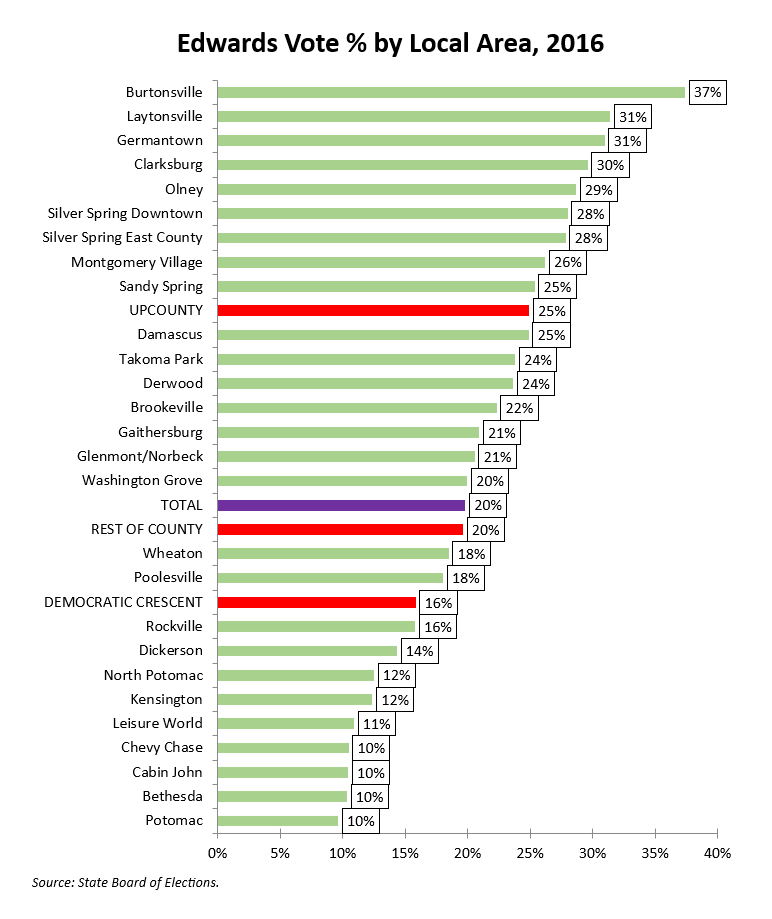By Adam Pagnucco.
In Part Three, we learned that 2016 U.S. Senate candidate Donna Edwards ran much better in counties with large Black populations than in counties without them. That pattern could very well apply to current U.S. Senate candidate and Prince George’s County Executive Angela Alsobrooks. Now let’s go deeper into one of the most critical jurisdictions of the 2024 election:
Montgomery County.
Regular readers know how partial I am to MoCo, having written about our gleaming locality for more than 15 years. But MoCo deserves extra attention in the 2024 U.S. Senate race for a number of reasons. First, it has more Democratic voters than any other Maryland jurisdiction except Prince George’s County. Second, it has the largest and most affluent Democratic donor base in the state. Third, it is home to two of the three leading candidates – Congressman David Trone and Council Member Will Jawando – and so neither of them can take it for granted. And fourth, it has a substantial number of Black Democratic voters who might go for either Jawando or Alsobrooks. I expect strategists from all three campaigns to actively plot how they can run up their vote totals here.
In the 2016 U.S. Senate election, Congressman Chris Van Hollen defeated Edwards by 76-20% in the primary in MoCo. That’s no surprise given that Van Hollen is one of the most famous politicians in MoCo history. But that huge margin conceals substantial variations in performance in different parts of the county. Outsiders, if you want to understand MoCo, start with this insight: we are not one monolithic jurisdiction. We are many jurisdictions who co-exist within the same borders.
Let’s start with the U.S. Census Bureau’s map of 2020 Black population percentage below. In Part Three, we saw how closely Edwards’s performance was correlated with the Black population across the state’s 24 local jurisdictions and that is going to matter in MoCo too. MoCo’s Black population is concentrated in East County, the U.S. 29 corridor, Montgomery Village and Germantown. Remember those areas as we proceed.

Now let’s go to the Congressional Districts. In 2016, three of them had a piece of MoCo. District 3, which was mostly in the Baltimore suburbs, had the northern part of the U.S. 29 corridor and areas of eastern Upcounty extending to Olney and Brookeville. District 6 had most of Western Maryland as well as western Upcounty and Potomac. District 8, which Van Hollen represented, had Downcounty’s vote-rich Democratic Crescent and also snaked up to Frederick and Carroll counties.
Here is how Edwards fared in the parts of those districts contained in MoCo on election day.

Predictably, Van Hollen wiped out Edwards inside his own district. Edwards did best in District 3, partly because it contained areas that were once within her own District 4 in the prior decade. Both Districts 3 and 6 had Upcounty voters who were never represented by Van Hollen and that limited his advantage in those places.
Now let’s look at Edwards’s election day performance by local area. (See my definitions here.)

Edwards’s best performances came in two kinds of local areas: Upcounty places that were not in Van Hollen’s district and places that had large Black populations. Remember how MoCo’s Black population was shown in the Census Bureau map above to be concentrated in East County, the U.S. 29 corridor, Montgomery Village and Germantown? Those areas were among Edwards’s best. That’s not a coincidence, folks.
Now here is an interesting fact: in the 2022 council at-large primary, Council Member Will Jawando did best in local areas and precincts with large Black populations like Silver Spring Downtown, Silver Spring East County, Takoma Park and Burtonsville. That’s a rough match with some of Edwards’s better areas, at least the ones not in Upcounty. Again, that is not a coincidence.
Black Democrats are an important voting bloc in MoCo. In 2016, a lot of them voted for Edwards. In 2022, a lot of them voted for Jawando.
Suppose Jawando was not in the 2024 U.S. Senate race. Would voters in his strongest areas go for Alsobrooks or Trone? What do you think?
We will wrap it up in Part Five.
